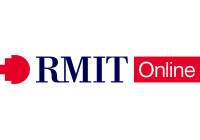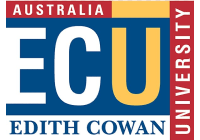Have you ever wondered what Agile and Waterfall are? If you’re working in project management in Australia, chances are you’ve come across these terms. But do you know what they actually mean and how they differ from each other? In this article, we’ll dive into the world of Agile and Waterfall and explore the pros and cons of each method.
In short, Agile is a flexible and iterative approach to project management, where projects are completed in small increments, and teams work collaboratively to deliver high-quality results quickly. Waterfall, on the other hand, is a linear approach where each phase of the project is completed before moving on to the next one. While Waterfall can be more structured and predictable, it may not be suitable for projects that require a lot of change or creativity.
If you’re new to project management or considering switching between these two methodologies, it’s essential to understand the advantages and disadvantages of each method. We’ll explore the key characteristics of both Agile and Waterfall and give you insights into which approach might be best for your project.
So, if you’re ready to learn more about Agile and Waterfall project management in Australia, let’s get started!
Quick Links To Online Project Management Degree Courses
Southern Cross University
Master of Project Management online
- 2 years part-time
- $2,990 per unit, FEE-HELP available
- Jan, Mar, May, July, Aug, Oct
RMIT Online
Graduate Diploma in Project Management
- 16 months intensive, part-time
- Jan, Mar, May, July, Aug, Oct
- $3,840 per course, FEE-HELP available
Edith Cowan University
Graduate Certificate of Project Management Online
- 6 months (minimum) part-time
- Jan, Mar, May, Jul, Sept & Nov
- $13,020 FEE-HELP available
What Is Project Management?
The process of planning, organising, and managing resources in order to achieve particular goals and objectives within a predetermined amount of time and money is referred to as project management. It entails supervising a project from the very beginning to the very end and making certain that all tasks are finished on schedule, within the allotted budget, and to an acceptable standard.
Initiation, planning, execution, monitoring, and completion are the five main stages that are included in the process of managing projects. During the start phase of the project, the project manager will identify the goals, objectives, and scope of the project, as well as decide whether or not the project is viable.
The project manager will create a comprehensive strategy for the project during the planning phase. This plan will include the tasks, resources, budget, and timetable that are necessary to successfully execute the project.
Putting the strategy for the project into action, managing the available resources, maintaining communication with those who have a stake in the project, and addressing any problems that crop up are all part of the execution phase. During the monitoring phase of the project, the project manager is responsible for tracking progress, identifying and managing risks, and making any required revisions to the plan for the project.
During the closing phase of the project, the project manager assesses the overall success of the endeavour, analyses the lessons learnt, and brings the project to a successful conclusion.
The successful administration of a project calls for a diverse set of abilities, including leadership, communication, the ability to solve problems, and organisation. A person who manages projects has to have the ability to collaborate with others who have an interest in the outcome, efficiently manage resources, and adapt to shifting conditions.
When it comes to achieving organisational goals and seeing projects through to a fruitful conclusion, good project management is very necessary. Project managers are able to guarantee that projects are finished on schedule, without exceeding the allotted budget, and to the standard of quality that was envisioned by employing efficient project management procedures.
What Is Waterfall Methodology?
The Waterfall technique is a time-tested approach to project management that entails following a linear and sequential procedure. The process is referred to as "waterfall" due to the fact that it involves a cascading flow of duties, in which each step needs to be finished before going on to the next.
A typical application of the Waterfall technique includes the following stages: requirements, design, implementation, testing, and maintenance. During the requirements phase of the project, the objectives of the project are outlined, and the scope of the undertaking is specified. During the phase known as "design," both the planning of the project's architecture and the determination of its technical needs take place.
During the phase known as implementation, the project is built from the ground up according to the design standards. During the testing phase of the project, the product is evaluated to confirm its quality and to determine whether or not it satisfies the criteria. In the last stage of the project, known as the maintenance phase, the project is put into operation and then kept in that state.
One of the advantages of utilising the Waterfall technique is that it makes it possible to generate a detailed plan for the project, complete with a specific schedule and a variety of deliverables. The management, planning, and monitoring of progress are all simplified as a result of this. In addition, the Waterfall technique is best suited for projects in which the requirements are clear, and there is a little amount of room for uncertainty in the process.
However, the Waterfall technique does suffer from a few drawbacks as well. It is not an approach that is well-suited for projects in which the requirements are anticipated to alter or develop throughout the course of the project since it can be difficult to go back and make modifications to previous phases once those phases have been finished. In addition, the Waterfall technique is known to have a lower level of flexibility and adaptability compared to alternative project management methods.
The Waterfall technique is a conventional approach to project management that is beneficial for undertakings that have project needs that are clear, and there is a minimal degree of unpredictability. On the other hand, projects that are anticipated to undergo changes throughout the course of their completion may benefit more from a method that is more adaptable, such as Agile.
Pros And Cons Of Waterfall Methodology
1. Pros
- Clear roadmap: The Waterfall technique provides a transparent and well-outlined plan for the project, together with a predetermined schedule and list of deliverables. Because of this, it is much simpler to manage and monitor progress.
- Well-suited for projects with well-defined requirements: The Waterfall technique is best suited for use on projects in which the requirements have been thoroughly outlined and there is a minimal amount of room for error. This can help lower the likelihood of mistakes or misunderstandings occuring.
- Clearly defined roles and responsibilities: The Waterfall technique makes it possible to precisely define the roles and duties of every member of a team, which can assist in ensuring that everyone is aware of what is anticipated of them.
- Emphasises documentation: The Waterfall technique places a strong focus on documentation, which may be helpful for ensuring that knowledge is shared and preserved over the duration of the project.
2. Cons
- Limited flexibility: When compared to alternative approaches to project management, the Waterfall technique is far less flexible and adaptive. After a phase has been finished, it might be difficult to make modifications or to go back and edit the work that was done previously.
- Limited stakeholder involvement: The Waterfall technique has a tendency to restrict stakeholder interaction to the phase of requirements collection, which might result in misunderstandings or miscommunications if not handled carefully.
- Poorly suited for complex or uncertain projects: Due to the fact that it might be impossible to forecast and plan for all possible outcomes, the Waterfall technique is not well-suited for use with projects that are either complicated or unpredictable.
- Risk of project failure: The inflexible nature of the Waterfall technique can make it more likely that a project will be unsuccessful, particularly if the requirements are not well specified or if adjustments are needed in the middle of the project.
What Is Agile Methodology?
An iterative and collaborative approach to project management, the agile technique is sometimes known as "agile." It is intended to be versatile, easy to modify, and sensitive to alterations in the needs or priorities that have been set.
Agile is founded on the Agile Manifesto, which is a set of guiding ideals and principles for software development. However, Agile may be used for a wide variety of projects across a number of different sectors.
The provision of value to the customer or end-user, whatever comes first, is at the heart of the Agile process. It emphasises cooperation, communication, and transparency between the consumers, stakeholders, and the development team.
The duration of an Agile project is generally divided into smaller, more manageable portions referred to as sprints. Sprints can range in length from two to four weeks.
The agile technique is centred on the following four core values:
- Individuals and interactions over processes and tools
- Working software over comprehensive documentation
- Customer collaboration over contract negotiation
- Responding to change over following a plan
Agile methodology also relies on a set of principles, including:
- Working software is the primary measure of progress
- Deliver working software frequently, with a preference for shorter timescales
- Business and development teams must work together daily throughout the project
- Build projects around motivated individuals and give them the support they need
- Face-to-face communication is the most effective form of communication
- Sustainable development is achieved through a consistent pace
- Continuous attention to technical excellence and good design enhances agility
- Simplicity is essential
- Self-organising teams are the most effective
- Teams should regularly reflect on their performance and adjust accordingly
In general, the Agile methodology is a well-liked and successful approach to the administration of projects. This methodology places a premium on teamwork, adaptability, and the provision of value to the end user. It is applicable to a wide variety of endeavours and fields of endeavour, and it is particularly well-suited for endeavours that involve a high level of uncertainty or that call for frequent adjustments or adaptations.
Pros And Cons Of Agile Methodology
1. Pros
- Flexibility: The Agile technique is extremely malleable in response to alterations, and it enables flexibility in both the project's needs and its timetable. This ensures that the project may alter as it moves forwards and that any necessary adjustments can be done in a timely and effective manner.
- Collaboration: The Agile technique places a strong focus on cooperation and communication among the many stakeholders, clients, and the development team. This results in a better grasp of the needs and priorities of the project, and it also guarantees that everyone is on the same page about the project goals.
- Early Delivery of Value: The goal of delivering increments of functioning software or products within shorter time periods is at the heart of the Agile approach. This makes early feedback possible, as well as the chance to implement modifications or enhancements as deemed essential, ultimately resulting in the early delivery of value to the client.
- Transparency: The Agile technique fosters openness in all elements of the project, including the progress that has been made, the obstacles that have been encountered, and the decisions that have been made. This fosters a culture of accountability and trust among the members of the team as well as the stakeholders.
- Customer Satisfaction: The goal of the Agile methodology is to maximise the level of happiness experienced by customers by fostering ongoing cooperation, receiving feedback, and making improvements. This results in an end product that caters to the requirements and requirements of the consumer in a manner that is more precise.
2. Cons
- Uncertainty: Due to the fact that it is intended to include alterations and newly discovered facts as they occur, the Agile approach might make it difficult to accurately foresee how the project will turn out in the end.
- Lack of Documentation: The Agile technique places a higher priority on increments of functional software or product rather than exhaustive documentation. This might provide a barrier for certain stakeholders who would rather have more complete documentation.
- Requires Strong Communication: The Agile methodology calls for robust communication and cooperation among team members as well as stakeholders; this can be difficult to achieve in bigger teams or with teams that are geographically dispersed.
- Limited Scalability: Because it may be difficult to manage and coordinate, agile methodology is not always suited for large, complicated projects or projects with a high number of stakeholders. This is because the Agile approach might make managing the project more difficult.
- Resistance to Change: Some members of the team and stakeholders who are accustomed to more conventional methods of project management may need to make a mental adjustment in order to successfully implement the Agile methodology. This might result in a reluctance to change as well as difficulties in adopting new behaviours.
Agile And Waterfall In Project Management Australia
Project management approaches such as Agile and Waterfall are commonly utilised by organisations in Australia to successfully manage their respective projects. Both of these approaches have their own advantages and disadvantages, and before deciding on one, businesses need to carefully examine the requirements and restrictions that are unique to their particular projects.
The Agile approach is gaining traction in Australia because of its malleability, adaptability, and concentration on the fulfilment of the needs of the client. It is particularly well-suited for software development projects, where requirements might change quickly and the final product may need to be delivered in shorter time limits. This type of project is an excellent fit for agile software development.
On the other hand, the Waterfall technique is a more conventional approach to project management that has a solid foundation in Australia. It is a method that is linear and sequential, and it requires finishing one part of the project before going on to the next. Because of this, it is well suited for projects that have their requirements, dates, and deliverables very precisely specified.
When deciding between the Agile and Waterfall techniques, businesses in Australia need to consider a range of aspects, including the complexity of the project, the size of the team, the participation of stakeholders, and the limits of the budget.
For instance, the Agile technique could be a preferable choice for a small software development project that has a strict deadline, particularly in situations where there is a significant degree of uncertainty and the capacity to react to changes is absolutely necessary. On the other hand, the Waterfall technique could be better suitable for a huge construction project that has a set budget and timetable and where the needs of the project are clear and are not expected to alter.
In recent years, there has been a movement towards hybrid techniques, which integrate the finest aspects of both Agile and Waterfall processes. These hybrid approaches are sometimes referred to as "agile waterfall." These hybrid strategies strive to give the adaptability and flexibility of the Agile methodology while also incorporating the structure and predictability of the Waterfall strategy.
The field of project management is undergoing a fast change in Australia, and in order for businesses to maintain a competitive edge and execute projects that are a success, they need to ensure that they are current with the most recent techniques and trends.
Organisations are able to ensure that they are producing high-quality goods or services on time and within their budget if they give careful consideration to the benefits and drawbacks of both the Agile and Waterfall methodologies and select the strategy that is best suited to meet the objectives of their individual projects.
How To Choose Between Agile And Waterfall
When it comes to picking between the Agile and the Waterfall approaches, businesses need to take into consideration a wide range of criteria before making their decision. The following are some important factors to take into consideration:
- Project Requirements: The first step in choosing a methodology is to understand the specific requirements of the project. Is the project well-defined, or are the requirements likely to change? Will the project require a lot of collaboration between team members and stakeholders? The answers to these questions can help guide the choice of methodology.
- Team Size: The size of the project team can also impact the choice of methodology. Agile methodologies are well-suited for small teams, while Waterfall can work well for larger teams with more defined roles and responsibilities.
- Project Timeline: The timeline of the project is another important consideration. Agile methodologies are designed to deliver projects in shorter time frames, while Waterfall can be more time-consuming due to its linear approach.
- Budget Constraints: Budget constraints can also impact the choice of methodology. Agile methodologies can be more expensive due to their emphasis on collaboration and adaptability, while Waterfall can be more cost-effective due to their focus on defined requirements and deliverables.
- Customer Involvement: The level of customer involvement can also be a factor in choosing a methodology. Agile methodologies are designed to be highly customer-centric, while Waterfall can be more focused on meeting defined requirements.
- Risk Tolerance: Organisations need to consider their risk tolerance when choosing a methodology. Agile methodologies embrace uncertainty and change, while Waterfall is designed to minimise risk through its linear approach.
In the end, the decision between using the Agile or Waterfall methodology is determined by the particular requirements and restrictions of the project. Combining the adaptability of Agile with the rigidity of Waterfall may prove to be the optimal answer in some circumstances.
By giving each of these aspects due consideration, organisations may select the methodology that is most suited to their requirements and assure the execution of successful projects.
Challenges Of Agile And Waterfall
1. Challenges Of Agile
- Managing Scope: With Agile, project requirements and scope can change frequently. This can make it difficult to manage the scope and ensure that the project stays on track.
- Team Coordination: Agile requires a high level of collaboration and coordination among team members. This can be challenging, especially for remote teams or teams with members in different time zones.
- Resistance to Change: Some team members and stakeholders may be resistant to the Agile approach, which can create friction and slow down the adoption of the methodology.
- Lack of Documentation: Agile prioritises working software over comprehensive documentation, which can make it difficult to maintain a clear record of project progress and requirements.
2. Challenges Of Waterfall
- Rigid Structure: Waterfall is a linear methodology, which means that it can be difficult to make changes once the project is underway. This can make it challenging to adapt to changing requirements or market conditions.
- Limited Flexibility: Waterfall can be less flexible than Agile, which can make it difficult to respond to changes or pivot the project in a new direction.
- Risk of Scope Creep: Because Waterfall requires a comprehensive project plan upfront, there is a risk of scope creep if the project requirements change.
- Stakeholder Communication: Because Waterfall is less collaborative than Agile, there is a risk that stakeholders may not be fully engaged throughout the project.
To overcome these problems, businesses can make investments in collaboration technologies for Agile teams, give training and support for Waterfall teams to handle scope changes, and develop strategies to bridge the communication gap between stakeholders and Waterfall teams. Agile teams use a set of guiding principles known as the Agile Manifesto.
Organisations can ensure the effective execution of projects regardless of the methodology they choose to employ so long as they are aware of their problems and make proactive efforts to solve those challenges.
Conclusion
In conclusion, it is essential for organisations and project managers in Australia to have a solid awareness of the distinctions between Agile and Waterfall as it relates to project management approaches. Both Agile and Waterfall have their own distinct advantages and disadvantages, and choosing the appropriate technique for a project may have a significant effect on how successfully it is completed.
Because it is a highly flexible and iterative methodology that strongly emphasises collaboration and flexibility, Agile is ideally suited for complicated projects whose needs are subject to change. On the other hand, Waterfall is a more organised and sequential technique, and it is best suited for projects with well-defined criteria and a different schedule.
It is essential to ensure that communication and cooperation remain at the centre of your project management process at all times, regardless of the technique you select. You can keep your project on track and guarantee its goals are accomplished if you involve all of the relevant stakeholders and keep the lines of communication open.
Which approach to project management do you think would be more successful for the requirements of your business in Australia, Agile or Waterfall? Please share your thoughts, experiences, and observations in the comment box below.
Content Summary
- In short, Agile is a flexible and iterative approach to project management, where projects are completed in small increments, and teams work collaboratively to deliver high-quality results quickly.
- Waterfall, on the other hand, is a linear approach where each phase of the project is completed before moving on to the next one.
- If you're new to project management or considering switching between these two methodologies, understanding each method's advantages and disadvantages is essential.
- The Waterfall technique is a time-tested approach to project management that entails following a linear and sequential procedure.
- A typical application of the Waterfall technique includes the following stages: requirements, design, implementation, testing, and maintenance.
- One of the advantages of utilising the Waterfall technique is that it makes it possible to generate a detailed plan for the project, complete with a specific schedule and a variety of deliverables.
- In addition, the Waterfall technique is best suited for projects in which the requirements are clear and there is a little amount of room for uncertainty in the process.
- It is not an approach that is well-suited for projects in which the requirements are anticipated to alter or develop throughout the course of the project since it can be difficult to go back and make modifications to previous phases once those phases have been finished.
- In addition, the Waterfall technique is known to have a lower level of flexibility and adaptability compared to alternative project management methods.
- The Waterfall technique is a conventional approach to project management that is beneficial for undertakings that have project needs that are clear, and there is a minimal degree of unpredictability.
- When compared to alternative approaches to project management, the Waterfall technique is far less flexible and adaptive.
- Poorly suited for complex or uncertain projects: Due to the fact that it might be impossible to forecast and plan for all possible outcomes, the Waterfall technique is not well-suited for use with projects that are either complicated or unpredictable.
- The inflexible nature of the Waterfall technique can make it more likely that a project will be unsuccessful, particularly if the requirements are not well specified or if adjustments are needed in the middle of the project.
- The Agile technique places a strong focus on cooperation and communication among the many stakeholders, clients, and the development team.
- This is because the Agile approach might make managing the project more difficult.
- Project management approaches such as Agile and Waterfall are commonly utilised by organisations in Australia to successfully manage their respective projects.
- Both of these approaches have their own advantages and disadvantages, and before deciding on one, businesses need to carefully examine the requirements and restrictions that are unique to their particular projects.
- On the other hand, the Waterfall technique is a more conventional approach to project management that has a solid foundation in Australia.
- When deciding between the Agile and Waterfall techniques, businesses in Australia need to consider a range of aspects, including the complexity of the project, the size of the team, the participation of stakeholders, and the limits of the budget.
- These hybrid approaches are sometimes referred to as "agile waterfall."
- These hybrid strategies strive to give the adaptability and flexibility of the Agile methodology while also incorporating the structure and predictability of the Waterfall strategy.
- Organisations are able to ensure that they are producing high-quality goods or services on time and within their budget if they give careful consideration to the benefits and drawbacks of both the Agile and Waterfall methodologies and select the strategy that is best suited to meet the objectives of their individual projects.
- When it comes to picking between the Agile and the Waterfall approaches, businesses need to take into consideration a wide range of criteria before making their decision.
- The size of the project team can also impact the choice of methodology.
- In the end, the decision between using the Agile or Waterfall methodology is determined by the particular requirements and restrictions of the project.
- Combining the adaptability of Agile with the rigidity of Waterfall may prove to be the optimal answer in some circumstances.
- By giving each of these aspects due consideration, organisations may select the methodology that is most suited to their requirements and assure the execution of successful projects.
- With Agile, project requirements and scope can change frequently.
- In conclusion, it is essential for organisations and project managers in Australia to have a solid awareness of the distinctions between Agile and Waterfall as it relates to project management approaches.
- Both Agile and Waterfall have distinct advantages and disadvantages, and choosing the appropriate technique for a project may significantly affect how successfully it is completed.
- Because it is a highly flexible and iterative methodology that strongly emphasises collaboration and flexibility, Agile is ideally suited for complicated projects whose needs are subject to change.
- Waterfall, on the other hand, is a more organised and sequential technique, and it is best suited for projects with well-defined criteria and a different schedule.
- It is essential to ensure that communication and cooperation remain at the centre of your project management process at all times, regardless of the technique you select.
Frequently Asked Questions
It depends on the project's requirements and objectives. Agile methodology is more flexible and adaptable, while Waterfall methodology provides a clear roadmap and timeline. Both methodologies have their strengths and weaknesses, and the choice depends on the project's specific needs.
Agile methodology can be challenging to manage in large projects with many stakeholders. However, it can be adapted to large projects by breaking them down into smaller, more manageable pieces.
Agile methodology is popular in the technology industry in Australia, particularly in software development projects. However, it can also be used in other industries where requirements are constantly changing.
Scope creep can be managed in Agile methodology by prioritising requirements, regularly reviewing and adjusting the project scope, and involving stakeholders in decision-making.
Agile methodology requires a high level of collaboration, communication, and adaptability from team members. It also requires skills such as time management, problem-solving, and the ability to work in a fast-paced and constantly changing environment.





